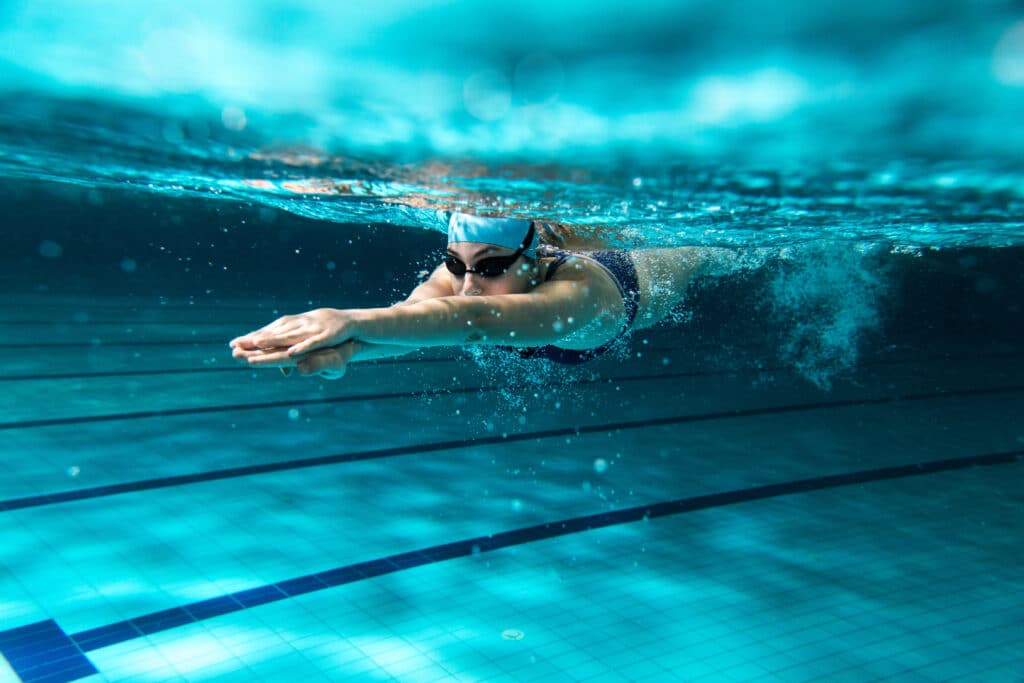Workload: the subtle harmony between preparation and performance
- The concept of workload has made its appearance as part of the drive to optimise performance in sport.
- The aim is to strike a balance between improving sporting performance and preserving the athlete’s physical integrity, by looking at the internal and external workload.
- Numerous technological devices make it possible to accurately measure this external workload (the objective measurement of the work carried out by the athlete during exercise).
- The data collected during training or competition is only useful if a link can be established between workload, performance, and potential injury.
- However, each body reacts differently to the same protocol, so the difficulty remains in modelling this dose-response relationship and proposing tools to trainers.
In competitions, all that seems to matter is the end result: the performance in front of an audience. But achieving this result requires preparation. More and more research is being carried out to gain a better understanding of athlete’s bodies and the preparation processes involved. Today, in the world of top-level sport, every movement is scrutinised and every victory is the result of hard work and meticulous preparation.
This has given rise to the concept of workload. “Over the last few years, there has been an exponential increase in the number of scientific publications on this concept,” explains Jacques Prioux, university professor at École Normale Supérieure in Rennes. This is where the real battle lies, in the meticulous management of workload; a delicate balance to be struck between improving sporting performance and preserving the athlete’s physical integrity.
“There are two types of workloads: external and internal,’ he explains. Overall, the external workload is most often quantified using sensors (GPS, LPS, etc.). It corresponds to the objective measurement of the work done by the athlete during training or competition. The internal workload corresponds to the body’s individual response to the demands imposed by the external load. It can, for example, be quantified using different physiological and/or biological parameters.” To ensure that the athlete is in the best possible physical condition, it is important to study the relationship between the external workload and the workload specific to the athlete, the internal workload.
Monitoring
To observe and understand external workload, researchers need to analyse the athletes’ activity during training and competition. “Technology plays a very important role,” admits the professor. It is through technology, and all the tools it offers us, that we can carry out monitoring.” Various sensors, such as the GPS (global positioning system) for outdoor sports (football, rugby, etc.) and the LPS (local positioning system) for indoor sports (handball, volleyball, etc.), enable extremely precise analysis of the athletes’ activity. How far have they run? At what speed? How many accelerations? Decelerations? And so on. “The closer we get to the top level, the more crucial this information becomes,” he insists. “I am currently supervising a thesis in which we’re working on data from players from Brest-Bretagne Handball, i.e. the highest level in women’s handball in Europe. They are all equipped with inertial units (another available sensor) during training.”

In this way, it is possible to precisely analyse the work carried out by an athlete during training. This makes for much more optimal programming. “It would be just as valuable to obtain the same data in competition conditions,” admits Jacques Prioux. “However, the cost of equipping stadiums, gymnasiums and players with these technologies is very high.” This data, although important, remains worthless unless it is considered in relation to the impact of this Workload on the athlete in question. “Workload is only of interest if we study its relationship with performance, but also with potential injuries,” he insists.
Personalised training
It’s a well-established fact that every single body is different. The same workload may not feel the same to everyone. And each body will require different preparation to optimise performance while limiting injuries. That’s why analysing internal workload is so important, and there are many tools available to researchers to enable this to be quantified. “At the end of a group handball training session, for example, we ask the players to assess the level of difficulty of the session on a scale of 1 to 10,” explains the professor. “If one player marks the session at 5, while another marks it at 10, we already have an important point of comparison: the state of fitness of the two players is probably not the same.”
In this example, for an external workload considered to be similar, the feeling differs between the two players. This data can then be coupled with other physiological data, such as oxygen consumption, heart rate or lactic acid concentration, to objectivise the effort made during training.
Relationship between dose and response
In this context, the dose corresponds to the workload and the response corresponds to performance or injury. Theoretically, if the workload proposed is too low, the athlete’s level of fitness will probably be lower than that obtained with a higher workload. However, too high a workload can have negative effects on the athlete’s body, in terms of fatigue for example. The difficulty therefore lies in identifying and then using the right workload. “If the workload proposed during training is too high, the fatigue level incurred will also be high,” explains Jacques Prioux. “The risk is that you won’t improve your initial level of performance and you’ll end up with an injury. If the workload proposed during training has been correctly adapted, the fatigue level will allow optimal recovery, favouring an improvement in your initial level of performance and reducing the risk of injury.”
This dose-response relationship is the subject of a great deal of scientific research, particularly using artificial intelligence. The aim of this scientific work is to model this dose-response relationship and provide coaches with tools to help them plan and individualise the training they offer their athletes. “There is still a great deal of progress to be made in this area, but the goal looks increasingly achievable,” concludes the professor.















